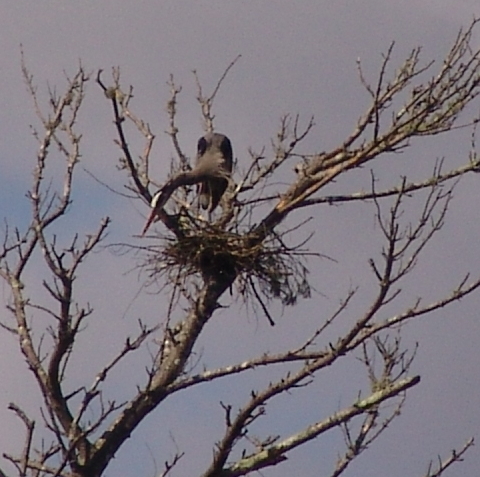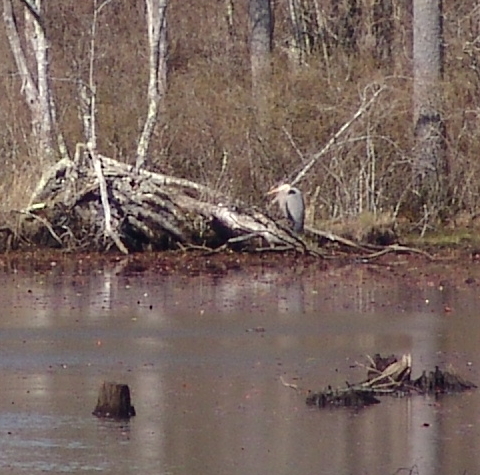Great Blue Heron (Ardea herodias)
The Turtle Journal team discovered a major great blue heron (Ardea herodias) rookery (heronry) this afternoon, April 2nd alongside a fresh water pond in Marion on the South Coast of Massachusetts. The first specimen we spotted (shown above) stood still and tall in a completed nest atop pine tree abutting the lake. Â
Three Nesting Great Blue Herons
The image of a second and then a third heron emerged from the camouflage of nearby trees. (Click on the above photograph to enlarge.) Within a few minutes we were able to identify at least six (6) herons roosting on nests within about an acre immediately adjacent to the far side of this small pond. We could only distinguish nests and birds near the pond; there could have been numerous other nests hidden from view.
Nesting Great Blue Heron
A fourth heron about 50 feet to the  left of the three herons pictured above appeared to be building or strengthening its nestÂ
Nesting Great Blue Heron
Turtle Journal usually works along side these magnificent birds during the summer as we do our marine turtle research in the salt marshes of Cape Cod and the South Coast. It’s a rare treat to find a great blue heron rookery so close to home base. Hopefully, we’ll be able to document hatching and then fledging of the next generation of great blues.
Great Blue Heron Mating Behavior
As we silently watched and snapped pictures of the herons, a large bird flapped its enormous wings and hovered near another. Quickly this bird took flight with raucous rasping honks in off-beat duet with its amorous companion. The two glided like pterodacyls to the far shore of the pond where they engaged in mating rituals.
Great Blue Heron Rookery on South Coast
The photograph above shows the rookery across the pond from the pathway. It’s located in dense swamp land with extremely limited access. The pond itself lies about a quarter mile from an active cranberry bog operation to the northeast, and a half mile from the Sippican Harbor estuary to the south.  Visit Turtle Journal soon. We hope to have updates on the progress of these nests through the spring.





